Outlier: How one NJ school district upped test scores and beat COVID's learning loss
A recent email from the state Department of Education took Union City Schools Superintendent Silvia Abbato by surprise.
The district, which serves some of New Jersey’s poorest students, had achieved a distinction. Its 11 schools were all meeting academic goals without state assistance — setting it apart from the 44 largest districts, even though Union City ranks third for students with high needs.
New immigrants keep arriving in this Spanish-speaking conclave of Hudson County, once a magnet for Cuban exiles — 54.6% of its population is foreign born, according to the 2020 census.
Story continues below photo gallery.
“We have noticed that year-in and year-out, Union City School District has been experiencing exceptionally strong outcomes for some of our state’s most challenging students,” the state email said. What was it doing differently? The state wanted to learn.
New Jersey’s Education Department wasn’t the only one taking notice.
Harvard economist Thomas Kane called Union City an “outlier” in New Jersey. According to the Education Recovery Scorecard — a Harvard and Stanford University collaboration examining academic recovery after the COVID-19 pandemic in 30 states — Union City’s students improved in reading between 2019 and 2022, while many other districts flailed.
The district also had the least learning loss because of the COVID-19 pandemic — and a significant recovery, even compared with such wealthier, higher-performing districts as Edison in Middlesex County and the West Windsor-Plainsboro Regional School District in Mercer County.
That's why Union City's success — in spite of its student population challenges and the pandemic — make it stand out as a possible case study to replicate for other New Jersey urban districts that serve large minority and low-income student populations, including Paterson and Passaic.
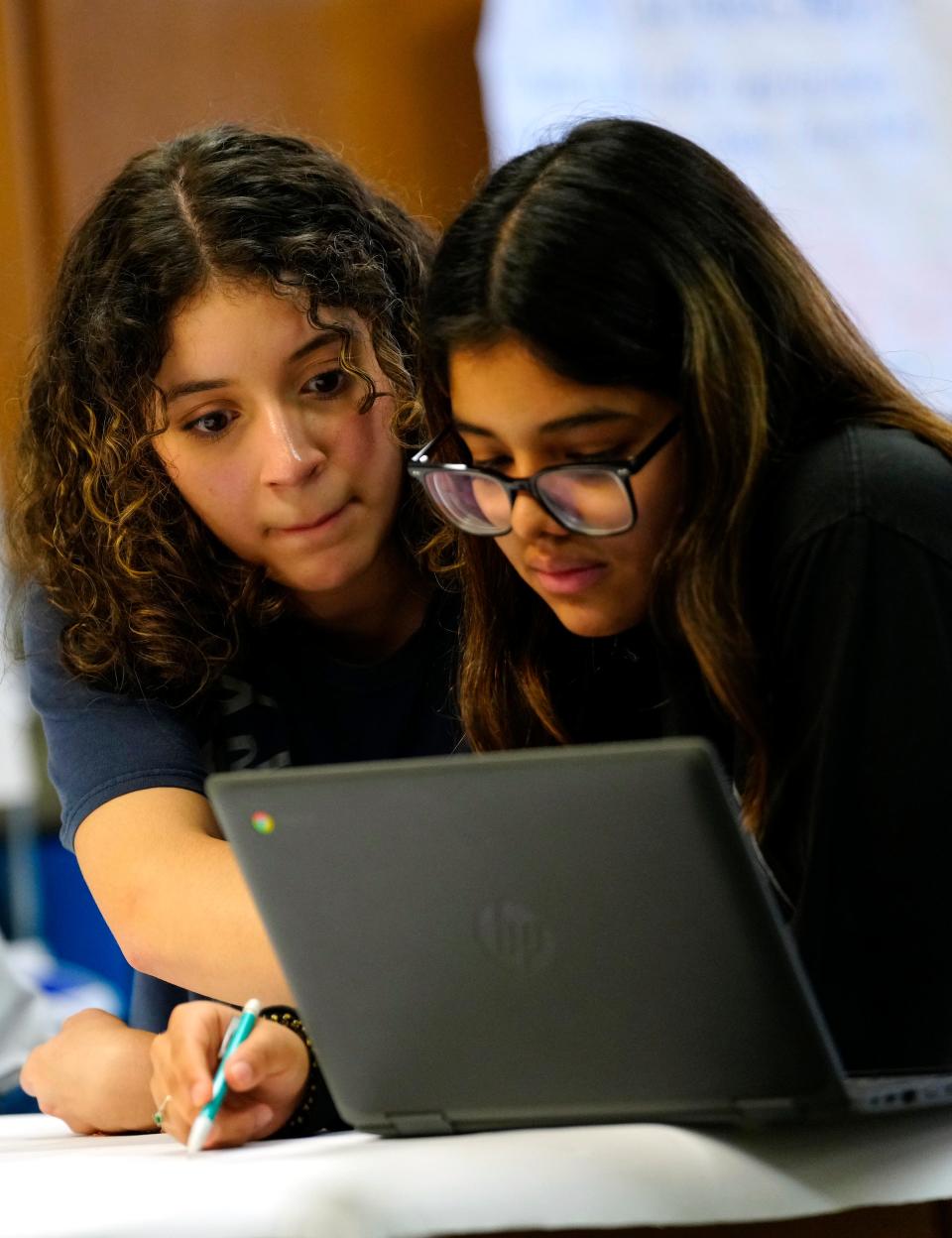
Union City's success through the pandemic occurred because of some very specific, quick-thinking decisions by administrators there — such as getting laptops to nearly all students soon after schools shut down during the pandemic, raising staff morale by using relief dollars to save jobs, and distributing food to families once a week to limit COVID exposure.
But its success in limiting learning loss — and recovering so quickly after the pandemic — was also based on a strong foundation of key decisions carried out over several decades by a district once so troubled it was threatened with a state takeover.
Because of the pandemic's disruption, most schools nationwide are still far behind their own 2019 levels of math achievement, Kane’s study showed. Between 2019 and 2022, American eighth graders lost 40% of pre-pandemic progress in math.
One of the pandemic's worst impacts in K-12 education is that it has widened achievement gaps for minority students. New Jersey’s Black and Hispanic students lost nearly a third of a year’s learning in math compared with white students.
Pandemic learning loss still high in many districts
Kane's study showed that in 2022, Newark, Perth Amboy, Paterson and New Brunswick were still more than one grade behind their own 2019 learning levels.
But Union City, a similarly high-poverty district, lost very little and has almost fully recovered, Kane said. What makes that all the more impressive is that in Union City, 35% of students are non-English native speakers and 84% are low income.
Edison and West Windsor-Plainsboro lost 1.23 and 1.18 points each in math — more than one year’s worth of learning between 2019 and 2022. Union City, at 0.26 points, lost only a quarter of a year’s worth of learning.
Those two districts do outperform Union City in overall math and English proficiency. But Union City schools made gains in reading during and after the pandemic’s shutdowns, while Edison lost three-quarters of a year’s worth of learning and West Windsor lost a third of a year. Both districts had not returned to their pre-pandemic reading levels in 2023.
At the José Martí STEM Academy in Union City, established in 2019 for the district's gifted high-schoolers, soaring English and math proficiency rates at 91% and 61% in 2022-23 showed barely a dent from the pandemic, which hit while the school was in its infancy.
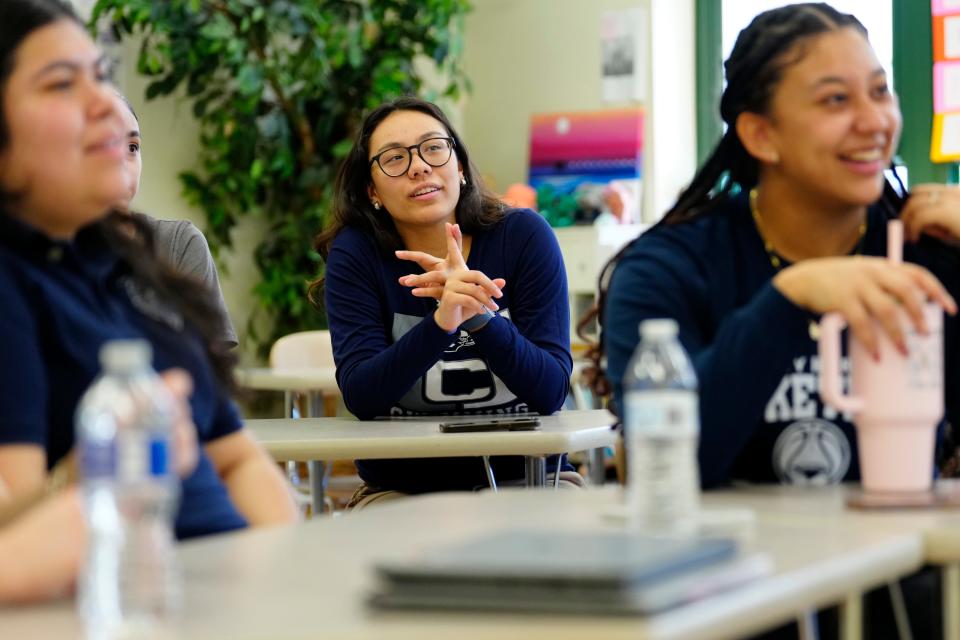
The Passaic city school district, like Union City, has many low-income and Hispanic students. By 2022, its students had lost three-quarters of a year’s progress in math, worse than Union City but far better than Paterson and even Edison.
When asked why, suburban, higher-income Edison, with 23% low-income students, declined to comment.
In the city of Passaic, 97% of students are low-income. Its administrators were aware of Union City’s success. They said they “strive” to emulate it, “recognizing the immense value of a high-performing urban educational system.”
Quick thinking when COVID hit
Union City already had strong foundations from the 1990s, when it rebooted after the state nearly took over its schools. Those decades of work provided a strong underpinning during the pandemic — there were no quick-fix silver bullets.
Still, Abbato, the superintendent, needed to think quickly when the virus hit.
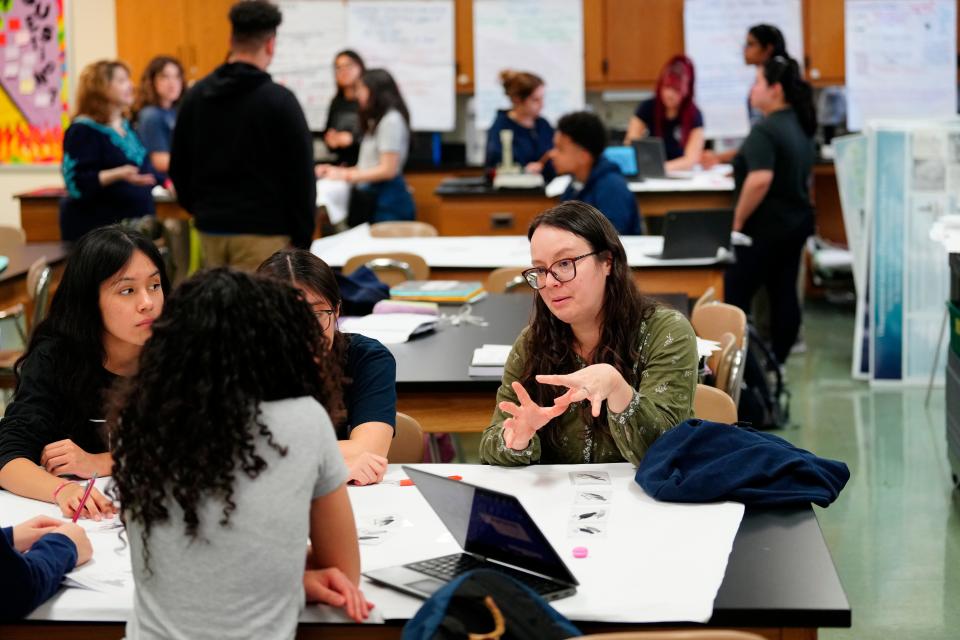
When schools closed due to COVID in early 2020, 90% of her students did not have laptops. The district had only 5,600 district laptops to distribute; Abbato sent kids home with whatever technology was available, bypassing some supply chain delays.
“We emptied our classrooms and labs,” Abbato said. Despite progress during the coronavirus lockdown, about 89,000 students across the state were still home without learning devices or internet access in June 2020.
When Union City schools reopened in September 2020, every student from grades one through 12 had a laptop and Wi-Fi access, Abbato said. Chromebooks were also purchased for children enrolled in the district's early childhood programs.
Abbato also decided that easy and safe food delivery was essential to building confidence within the community. Most urban districts had families visit schools to pick up food on multiple days of the week. Abbato made an executive decision: Union City families would receive an entire week’s supply of food in one school visit.
When the food suppliers told her this was impossible due to supply problems, she told them to find a way — even if it meant including more dry, non-perishable foods in the weekly packets.
This would give families flexibility in a community already reeling from the virus and leery of further exposure. COVID-19 was the leading cause of death in New Jersey among Black, Hispanic, Asian and foreign-born residents in 2020, according to the state Health Department. Hudson County was among the worst hit.
In-person tutoring over remote
Last year, when the state awarded thousands of dollars in high-impact tutoring grants to help kids catch up from COVID learning loss, Abbato decided to stick with the district's own teachers, while most districts, struggling from the ongoing teacher shortage, purchased virtual tutoring platforms.
In-person tutoring matters, she said. “The teachers know the students — they’re with them every day,” she said. District teachers tutored small groups with a $614,000 grant.
Studies have linked longer remote schooling to increased learning loss. Union City also was remote through most of the 2020-21 school year but reopened for in-person learning in May 2021. As in many suburban schools, remote students alternated with in-class cohorts.
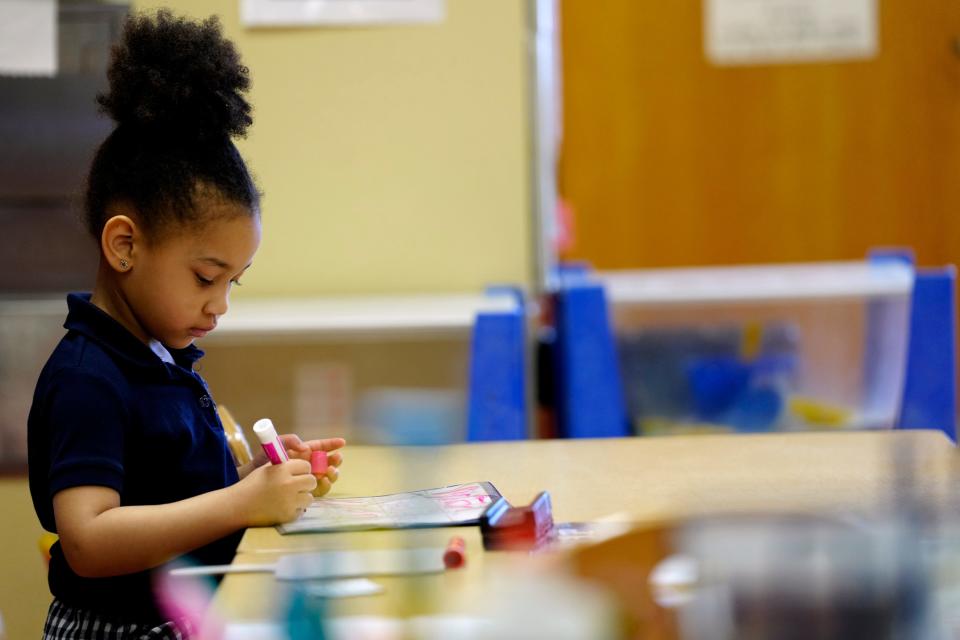
In comparison, Passaic city’s students were all remote from mid-March 2020 until summer school began in July 2021, two months after Union City. It, too, offered summer and after-school programming for all students. But its Chromebook distribution went on throughout 2020, the district said.
Threatened with state takeover
A failing district in 1989, Union City was threatened with a state takeover, said David Kirp, a professor at the Goldman School of Public Policy at the University of California, Berkeley, whose book “Improbable Scholars” profiles the district's later success.
The district replaced top administrators during a one-year reprieve from Trenton. Veteran bilingual teacher Fred Carrig was put in charge of fixing the schools. His core team included Abbato, then an elementary school math and science supervisor.
Combining innovation and research with standard reform, the district began to change within the year. The team visited each school and sold teachers on new approaches.
“The curriculum had no continuity” before, Abbato told NorthJersey.com. That had to change.
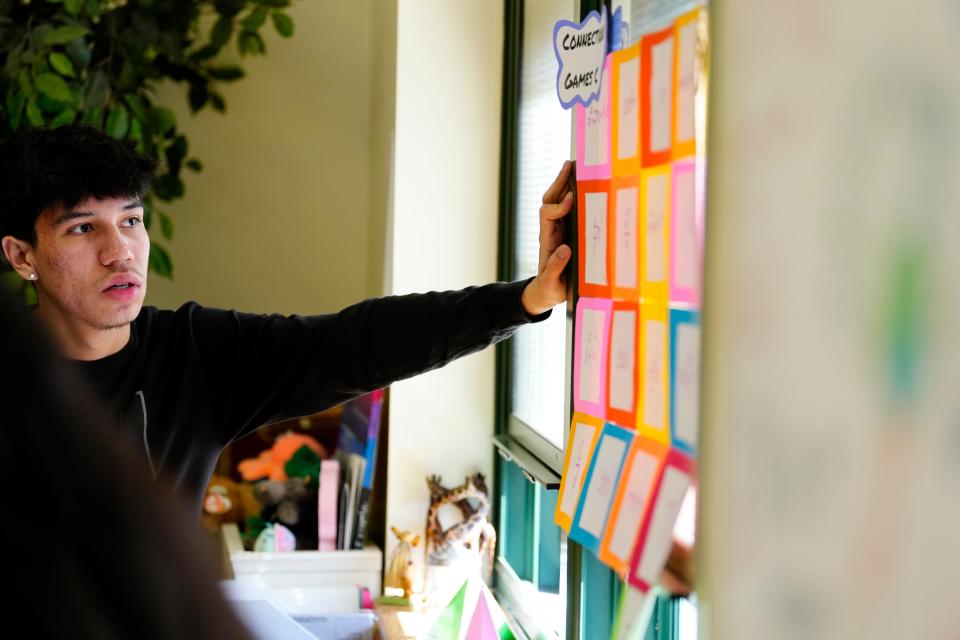
The same lessons were now taught in the same sequence districtwide, so as not to affect kids who moved within the city during the school year, Kirp said.
Carrig devised “learning centers” by assigning kids who were similar academically into groups in the same classroom to help homeroom teachers keep tabs on them. And students were exposed to lots of language in what Kirp calls a “word-soaked” curriculum.
Boosted early childhood education
The district boosted its early childhood education. In an unusual feat, it continues to provide private centers with its own curriculum, which the centers then implement, Abbato said. The first cohort of fourth graders who went through the revamped preschool program improved "dramatically" on the New Jersey Assessment of Skills and Knowledge, a state test, she said.
Fourth graders meeting or exceeding state standards in English almost doubled from 45% to 86% between 1998 and 1999, when the district revamped its preschool program, and between 2002 and 2003, according to a study by the Education Law Center.
The study also showed that Union City students spent more time on instruction than did students throughout New Jersey, even in the wealthiest districts.
But at the heart of Union City’s continued success is a bedrock: its sense of community.
Abbato’s twin sister, Adriana Birne, runs the district’s much-lauded early childhood center — U.S. Education Secretary Miguel Cardona visited in February.
Abbato and her twin are nearly lifelong residents, having arrived in Union City as children when their parents immigrated from Cuba. Teachers stay on, and many are former students. A retired teacher returns to paint elaborate jungle murals on the walls of Colin Powell Elementary, said a beaming Teresita Diaz, its principal.
During a recent school visit to Colin Powell, Abbato greeted every employee — many by name. She remembered if they had been out sick. A class of fourth graders, undaunted by visitors, was ready to answer questions and walk up to the front of the class. A sense of pride pervaded.
Senior administrators also credited Union City Mayor Brian Stack, a Democratic state senator, who pays close attention to the schools while bringing along a Trenton connection.
Stack also appoints Union City's school board members; they are not elected. "It's another reason we're successful. BOE members have remained for many years and are aware of long-term initiatives," Abbato said.
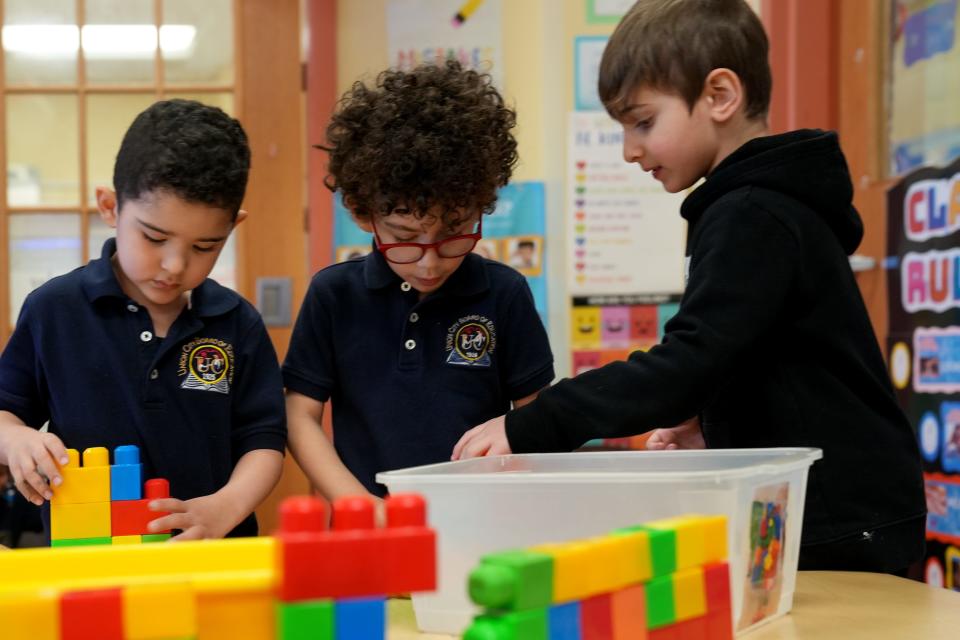
Problems are more scalable in Union City than in larger districts such as Paterson, Abbato acknowledged. Central office personnel are assigned to specific schools, sometimes targeting specific grades.
“We’re not a large district," she said. "We use our data to drive decisions, and we have a stable leadership. That plays a great role. There’s not that many transfers and changes within schools. You want stability.”
The district spent 80% of its $50 million federal COVID relief grant through the American Rescue Plan on salaries and benefits for staff. Job security — even for non-instructional staff — during the pandemic has paid off.
Challenges remain for Union City
Still, the district has its share of challenges.
Federal law requires states to identify low-income schools that are struggling. In 2021-22, the Murphy administration flagged Union City's 300-student PK-3 Hudson Elementary School as needing targeted support.
“We immediately went as a team to that school,” Abbato said. Her team of supervisors made scheduled and unannounced visits, bringing new hires up to speed with district practices and creating a blueprint.
“We monitored to make sure everything was being followed at the the classroom level,” Abbato said.
A year later, in 2022-23, Hudson Elementary was off the state list.
Another problem area is math, where proficiency is only 33%, well below state targets.
Abbato said she is working on it, especially high school algebra. Both nationally and in the district, “Algebra scores aren’t where we want them to be,” she said. “We have a large immigrant population, and the English is a little easier for them to capture than math, which needs problem solving, using both formulas and language.”
Unique bilingual program
Reading is Union City’s big success. Nearly three-quarters of its students speak Spanish at home, yet the district surpassed state averages for English proficiency.
Its advanced bilingual program is unique. Students who exit ESL services continue to receive additional, in-class support from appointed staff. Teachers are ESL/bilingual-certified, and on the district’s tab. "Almost no one else does that," Abbato said. "Here it’s part of the contract. We used to do it for all teachers, but now it's too costly, so we offer it to selected teachers.”
Then there’s the “port of entry” program, with an extra ESL class period and native language instruction for over-age immigrant students who may have recently crossed the border.
Abbato navigates the statewide teacher shortage with professional development and word-of-mouth hiring from within the town.
The district’s approach to children with learning disabilities is also unique, at a time when out-of-district special education costs are skyrocketing. It retains around 91% of special needs kids — including the autistic population — in district, through special resource programming. The city of Passaic sends 15% of its special needs students outside the district.
“If they’re going to outside providers, they’re on a bus at least an hour each way,” Abbato said. “They’re getting home late. They’re not in the community. I think its best when we have our students with us.”
“From being part of the team that first put in improvements in the district,” said Abbato, now in her 10th year as superintendent, “it’s just overwhelming to see the progress.”
This article originally appeared on NorthJersey.com: How one NJ school district upped reading scores and beat COVID

